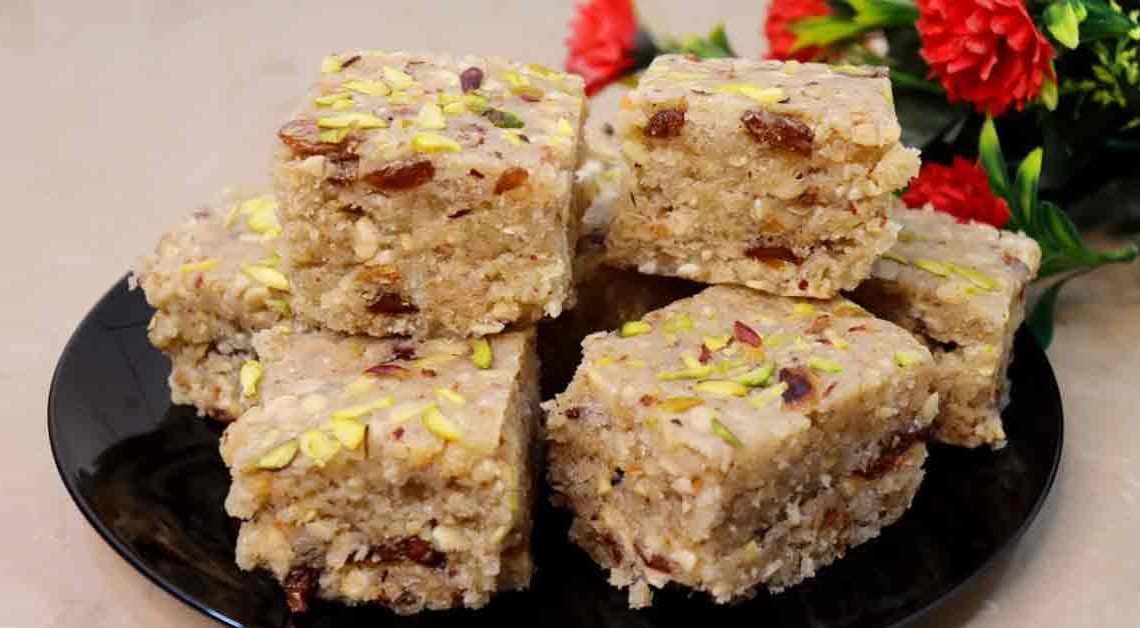Add a Sweet Twist to Your Life with Anjeer Halwa!

Welcome to a culinary escapade that promises to tantalize your taste buds and take you on a delectable voyage through the enchanting world of Anjeer Halwa.
Anjeer Halwa: A name that resonates with sweetness, tradition, and the sheer artistry of culinary expertise. Originating from the fragrant kitchens of the Indian subcontinent, it boasts a rich history that mirrors the fusion of culture and ingredients that define the region’s cuisine.
Imagine succulent figs, tenderly cooked to perfection, their natural sweetness woven into a symphony with ghee, nuts, and aromatic spices. Each spoonful is a journey through time, echoing the age-old traditions of treating guests with utmost warmth and indulgence.
Join us in this delightful expedition, where we blend heritage, taste, and culinary passion to explore Anjeer Halwa like never before. Let’s embark together on a journey that celebrates the past while savoring the present – one spoonful of Anjeer Halwa at a time.
Origin of Anjeer Halwa
The origin can be traced back to the rich culinary heritage of the Indian subcontinent, where the use of figs (Anjeer in Hindi) has been celebrated in various dishes for centuries. This delectable dessert holds a special place in the hearts and palates of those who appreciate the natural sweetness of figs and the art of traditional Indian sweets.
Figs have been consumed and revered for their natural sweetness and health benefits since ancient times. Their mention can be found in various historical texts and scriptures, indicating their presence in culinary traditions across cultures.
Over the years, it evolved from a simple preparation to a culinary masterpiece. The addition of ghee, milk, and a medley of aromatic spices like cardamom and saffron turned it into a dessert fit for special occasions and celebrations.
History of Anjeer Halwa
The history traces back to the rich culinary heritage of the Indian subcontinent, where the use of figs and other natural ingredients has been cherished for centuries. This sumptuous dessert is a testament to the region’s love for incorporating local flavors into traditional sweets.
Figs, the key ingredient in Anjeer Halwa, have been cultivated for thousands of years across different parts of the world, including the Indian subcontinent. Their mention can be found in ancient texts, signifying their value as a sweet and nutritious fruit.
Figs have long been associated with luxury and indulgence. In Indian culinary history, sweet dishes made from figs, were often enjoyed by royalty and elites during feasts and special occasions. The use of premium ingredients and elaborate preparation techniques elevated these dishes to symbols of opulence.
Cultural Significance
Anjeer Halwa holds a significant place in the cultural tapestry of the Indian subcontinent. Beyond its delectable taste and aromatic flavors, this dessert carries cultural importance that is deeply rooted in traditions, celebrations, and gestures of hospitality.
Festive Celebrations: It is often associated with festive occasions and celebrations. Whether it’s Diwali, Eid, weddings, or other special events, the dessert like badam halwa, moong dal halwa graces the tables as a symbol of abundance and joy. Its presence adds a touch of sweetness to the festivities, enhancing the overall celebratory atmosphere.
Symbol of Hospitality: In many cultures, offering sweets to guests is a gesture of warmth and hospitality. Anjeer Halwa, with its rich and indulgent nature, exemplifies this tradition. Serving this dessert to visitors is a way of honoring them and expressing a warm welcome.
Cultural Fusion: It also highlights the fusion of flavors and influences in Indian cuisine. As the subcontinent has been a crossroads of cultures for centuries, the dessert’s use of figs, spices, and ghee represents the amalgamation of diverse culinary traditions.
Where is Anjeer Halwa Famous?
Anjeer Halwa is famous primarily in the Indian subcontinent, where it holds a special place in the culinary traditions of various regions. Its popularity extends to countries with significant Indian populations and a deep appreciation for traditional Indian sweets.
India: It is widely enjoyed throughout India. It holds cultural significance in regions like North India, where it is prepared during festivals, weddings, and special occasions. Cities like Delhi, Lucknow, and Jaipur are known for their delectable versions of Anjeer Halwa, Gajar ka halwa and many more.
Bangladesh: It has also made its mark in Bangladesh, where it’s appreciated for its rich flavors and connection to festive occasions.
Middle East: Due to its cultural and historical ties with the Indian subcontinent, countries in the Middle East with Indian and Pakistani communities also embrace Anjeer Halwa. It’s often served during traditional feasts and gatherings.
Interesting Facts and Trivia
Certainly, here are some interesting facts and trivia about Anjeer Halwa:
- Figs are known for their health benefits in Ayurveda, the traditional Indian system of medicine. They are considered a cooling fruit and are believed to have digestive and rejuvenating properties.
- It often includes an array of aromatic spices such as cardamom, saffron, and nutmeg. These spices not only enhance the flavor but also contribute to the dessert’s cultural richness.
- The texture is a delightful balance of smoothness from the blended figs and the crunch of nuts like almonds and pistachios. This textural contrast adds to the dessert’s overall appeal.
- The trade routes between the Indian subcontinent and the Middle East facilitated the exchange of culinary traditions. Anjeer Halwa’s popularity in Middle Eastern countries reflects the influence of Indian and Pakistani cuisine in the region.
- As Indian cuisine gains international acclaim, it is finding a place on global dessert menus, allowing people from diverse backgrounds to savor its unique flavors and cultural significance.
Did You Know?
Anjeer Halwa isn’t just a dessert that tantalizes your taste buds—it’s also a wholesome treat packed with health benefits!
- The main ingredient, figs, are a powerhouse of nutrients, including dietary fiber, vitamins, and minerals like potassium and calcium. This combination contributes to overall well-being.
- Figs are rich in antioxidants that combat free radicals and oxidative stress in the body. These antioxidants play a role in promoting overall health and potentially reducing the risk of chronic diseases.
- The combination of figs, ghee, and nuts provides a quick source of energy. Whether it’s for a morning pick-me-up or a post-workout snack, this dessert can give you the energy you need.
- Consuming it goes beyond its nutritional value. It’s a cultural experience that connects you to traditions, festivals, and the heritage of Indian cuisine.
- While it offers health benefits, it’s important to enjoy it in moderation due to its richness. Savoring a serving mindfully can provide the desired flavors without overindulgence.







